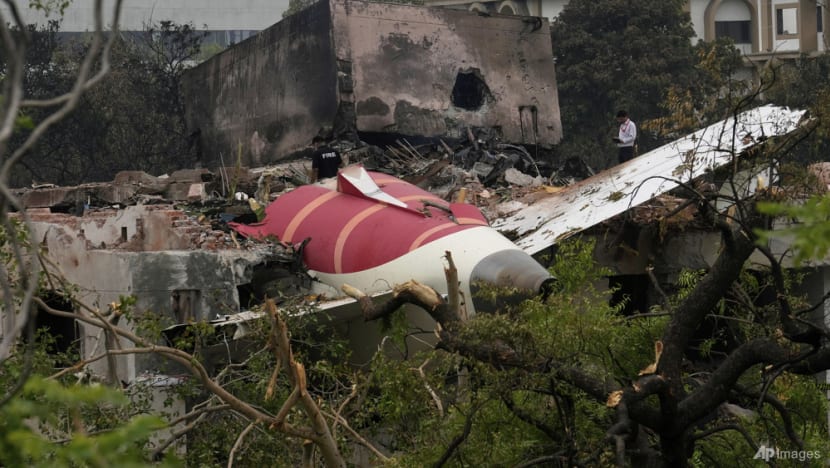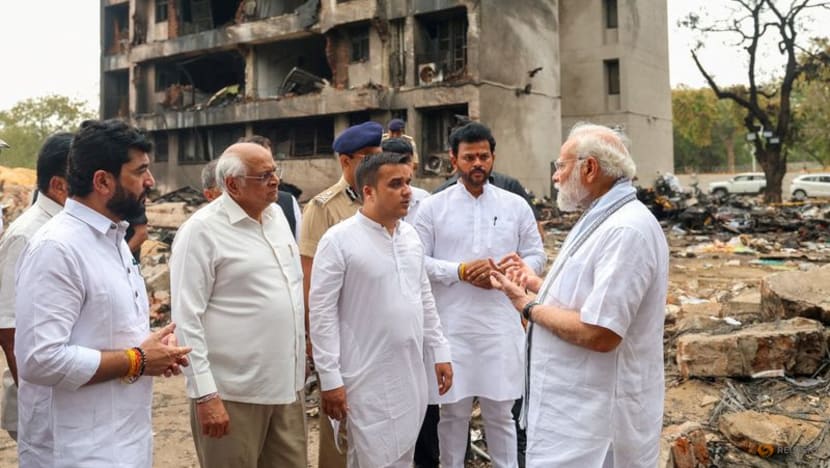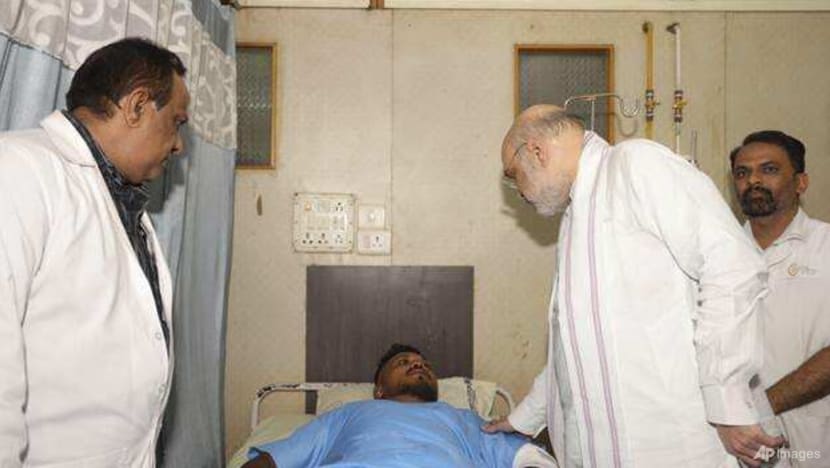Why did the Air India plane crash shortly after takeoff? Aviation experts weigh in
A central question for investigators is why the aircraft failed to gain altitude.

Parts of an Air India plane that crashed on Thursday are seen on top of a building in Ahmedabad, India, Friday, June 13, 2025. (AP Photo/Rafiq Maqbool)

This audio is generated by an AI tool.
The moments just after takeoff are often the most challenging in aviation – ones that pilots are rigorously trained to handle, air safety experts said on Friday (Jun 13), a day after an Air India crash.
Air India flight AI171 ploughed into a residential area shortly after taking off from Ahmedabad airport in the western Indian state of Gujarat. The Boeing 787-8 Dreamliner was en route to London with 242 people on board.
Only one passenger is believed to have survived the crash. Among the casualties on the ground were students residing in a medical hostel.
While the exact sequence of events will only become clear after a thorough investigation, aviation observers noted that the passenger jet – flown by two experienced pilots with over 9,000 combined flying hours – had issued a frantic mayday call just seconds after liftoff.
“It's very rare because this is one of the crucial phases of flight where the pilots are heavily trained on – takeoff and landing,” said aviation safety consultant Michael Daniel.
“The pilot on the radio declared a mayday. For what reasons, we don't know yet. That information will come out quickly once they start analysing the flight data recorder and perhaps also the cockpit voice recorder.”

PRELIMINARY FINDINGS WITHIN 30 DAYS
Investigations are currently underway to establish the cause of the disaster.
Preliminary findings are expected to be released within 30 days in line with international civil aviation standards.
But experts said that the full picture will take far longer to emerge.
“That's a goal for the accident investigators to issue preliminary information. Hopefully other operators can learn and gain information from that,” said Daniel, managing director of consultancy firm Aviation Insight.
“But the final report could take a year, sometimes even longer, because a very complex accident investigation such as this one involves a lot of collaboration between different parties.”
Daniel, who is also a member of the International Society of Air Safety Investigators, emphasised the importance of transparency.
“Some governments will issue cockpit voice recording transcripts … (or) air traffic conversations early,” he told CNA's Asia Now.
“But it's up to the government of India as to how much transparency they will provide and also how much communication they will provide, especially for the families.”
WHAT COULD HAVE HAPPENED?
The investigators will examine a range of factors, including training protocols, airline culture, maintenance issues, and weather conditions, said analysts.
“We tend to think of the investigation as being on the scene, but in fact, the investigation also goes very much off the scene and looks at (many) other things,” said aviation safety expert Shawn Pruchnicki.
“This is why it takes so long to do these investigations. When you do them correctly, as I'm sure they're going to, it could take a year, or a year and a half to finally get to the bottom of this and fully understand why.”
The aircraft involved was 11 years old, just half the lifespan experts expect the model to have.
“These airliners are built to typically be flown around 20 years or so, if not more,” Pruchnicki told CNA's Asia First. “The maintenance history is going to be very important.”
A central question for investigators is why the aircraft failed to gain altitude after takeoff.
When the aircraft started to lift, it only gained a little bit of height before it descended again, said Daniel.
“That tells me that the aircraft did not establish a positive rate of climb for whatever reasons – could be power, could be mechanical, could be loading weight and balance,” he added.
Pruchnicki, who is an assistant aviation professor at The Ohio State University, said: “One (reason) can be that the flaps – the devices that help the aircraft maintain lift – could have retracted prematurely.
“Or more likely is the engines not being able to produce enough power, to be producing enough thrust to be able to maintain lift.”
Another probable cause that some experts highlighted is a rare double engine failure.

Meanwhile, investigators are combing the crash site of one of India's worst aviation disasters for clues.
“One of the first challenges for the investigators is collecting evidence, collecting data,” said Daniel.
“They have to cordon off the area, make sure people are safe, no one can go in and out, and to ensure that they can start collecting the evidence, including examining the engines, which is very important to establish why the aircraft could not establish a positive rate of climb.”
















